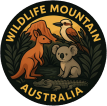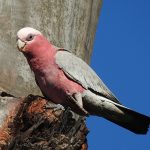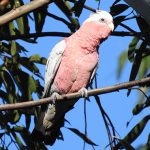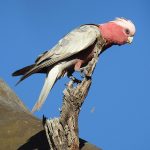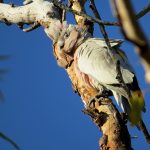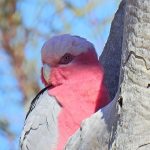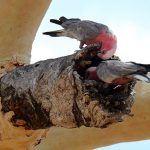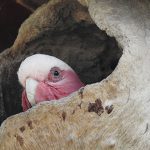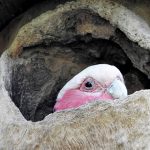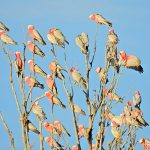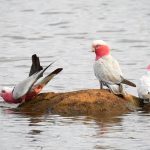GALAH
The Galah, a joyful spirit
In the expansive tapestry of Australian landscapes, there is a bird whose joyful spirit and vibrant colours make it one of the most beloved icons of the bush. The Galah brings a touch of pink to the eucalypt woodlands, open grasslands and even bustling city parks, capturing the imagination of all who encounter it.
Description
Appearance:
The Galah is easily recognised by its soft pink chest and face, contrasting beautifully with its pale grey wings and back. Its short, rounded crest is a pale pink or white, and its lively eyes gleam with curiosity and intelligence.Size:
Measuring about 35 cm from beak to tail, the Galah is a medium-sized cockatoo, robust in form and lively in character.Sounds:
When a flock of Galahs takes flight, their raucous calls fill the air with a chorus of whistles and squawks—a sound as unmistakable as the Australian outback itself.Movement:
In flight, the Galah moves with swift, undulating wingbeats, streaking across the sky in a blur of pink and grey. On the ground, it hops and waddles, often seen foraging for seeds with its nimble beak.
Ecology and Behaviour
Habitat:
Galahs are highly adaptive, found across almost all of Australia except for its driest deserts and densest rainforests. They thrive in open country, woodlands, and increasingly, in urban settings.Diet:
Their menu consists mainly of seeds from native grasses and crops, with occasional fruits, nuts, and insects. Their strong beaks are perfectly suited for cracking seeds and digging into the earth.Social Life:
Galahs are highly sociable, gathering in flocks which can number into the hundreds. They engage in playful acrobatics—swinging upside-down from branches and chasing one another through the trees. Their partnership is equally notable; Galahs are monogamous, often forming lifelong pairs that share nesting duties and groom each other affectionately.
Cultural and Conservation Relevance
Human Connection:
Galahs are familiar companions to many Australians, both in the wild and as pets. Their bold and inquisitive nature has made them a popular presence in art, literature, and even colloquial language.Conservation Status:
Unlike many other native birds that struggle with habitat loss, Galahs have adapted spectacularly to lives alongside humans. Their populations are stable and, in some regions, even increasing. Nevertheless, they face threats from habitat changes, vehicle collisions, and interactions with toxic plants or urban environments.
Conservation
As adaptable as Galahs are, their success should not lull us into complacency. They remind us that maintaining wild spaces, supporting sustainable agriculture, and nurturing urban greenery are all vital—ensuring that not just Galahs, but all of Australia’s extraordinary species, continue to thrive.
The story of the Galah is a tale of resilience, joy, and harmony with the land. Through its enduring presence, the Galah reminds us of nature’s vibrancy and the importance of cherishing the wild places—both for their own beauty and for the creatures who call them home.
Photo Gallery
Sharon: An awesome sight to see was the dusk ‘Fly-In’ of large flocks of Galahs in outback Queensland, Australia. A small tree covered island in the middle of a large dam on this outback property provided the perfect safe refuge for the Galahs to overnight in. A long zoom but still a fabulous ‘Close Encounter’.
